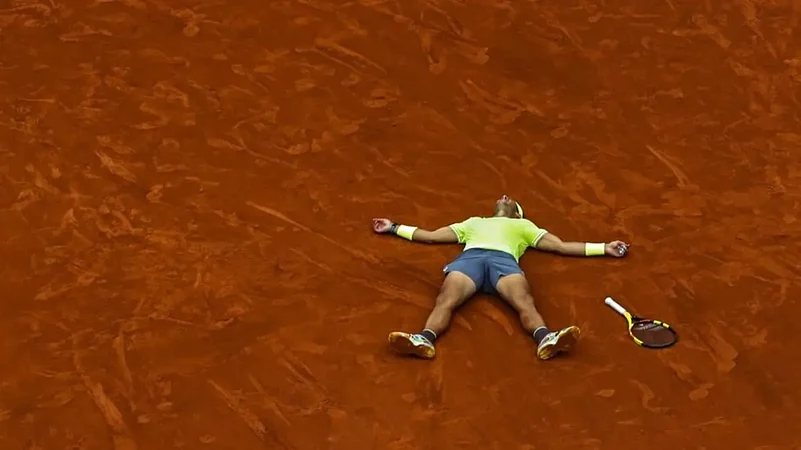Whenever it comes to a close — and even if it already has — Rafael Nadal’s superlative tennis career will be admired for achievements such as 22 Grand Slam titles, currently tied for the most by a man, and a record 14 French Open championships. As it should be. (More Tennis News)
Nadal’s playing days, though, also will be remembered for more than mere numbers. That bullwhip of a lefty forehand. Engaging rivalries with Roger Federer and Novak Djokovic. Unprecedented dominance at Roland Garros, where a statue of him stands. Unfailing humility. Those muscle-bearing shirts and calf-covering capri pants of the early days. The still-present penchant for placing courtside bottles just so. And on it goes.
Any complete conversation about Nadal also must include a reference to the body-bruising style and endless effort, in matches and practice sessions, that fueled more than 1,000 wins and surely contributed to all of the many injuries. He announced Thursday that he has not healed enough to enter the field in Paris, where play begins May 28, and can’t be absolutely sure when he might be able to return to the tour after being sidelined since January by a left hip flexor problem.
Looking at the bigger picture, as aware as everyone else that the pertinent questions now revolve around his future in the sport, Nadal turned a tad philosophical.
“Everything has its beginning,” he said, “and, above all, everything has its end.”
So is this the end of the road with a racket in hand for Nadal? It very well could be. Nadal, who turns 37 on June 3, can’t be sure. Neither, of course, can we. Still, it would be foolhardy to rule anything out when it comes to someone as skilled, determined and indefatigable as he always has been.
“Am I going to be able to fight for a Grand Slam?” he asked during the news conference at his tennis academy in Manacor, Spain, before offering this honest answer: “I don’t know.”
He is putting a stop to things for the moment — no matches, no practices — so his hip can recuperate. The break could last months. Or more.
“The world of tennis, and the Roland Garros tournament, will be affected by his absence ... because (of) his history in that tournament and generally what he has achieved in his career and the impact he has made on the sport,” said Djokovic, whose own pursuit of a record-breaking 23rd Grand Slam title and chance to finally stand alone atop the Big Three in that category just got a tad easier.
“Of course, him missing any tournament, but particularly the big ones,” Djokovic added, “has an impact on the tennis world and the tennis fans.”
And Nadal himself.
He spoke frankly about the physical and mental toll exacted recently.
About the pain. About the frustration.
He hopes to play again this season, possibly in the Davis Cup. He wants to play some of his favorite events in 2024 before calling it quits, including, naturally, the French Open, which he entered 18 consecutive times, going 112-3, an event and athlete intertwined like no others.
That might conjure images of a carefully curated list of preferred events, where pre- and post-match speeches and ceremonies would include fond memories and well-meaning jokes and “Whoa, you’re old and ready to rest!” gifts such as rocking chairs or a robe and slippers.
But no one should expect Nadal to be interested in the hagiography of it all. Indeed, no one should be surprised if he goes out there and manages to win another tournament, let alone somehow summons the skill and stamina to navigate the grind of seven best-of-five-set matches at a major.
He’s never allowed his health to hold him back for too long. He’s never allowed doubts — his own; those of others — stand in the way of greatness.
“I don’t want my last year to just be a farewell tour,” Nadal said. “I am going to do everything I can so that I am competing at the highest level during my final year. And I want to be able to ... compete to win tournaments. I am going to fight for that. But we’ll see what actually happens.”
















